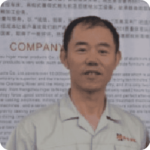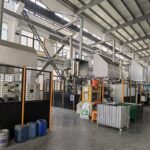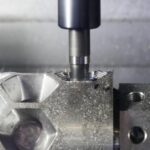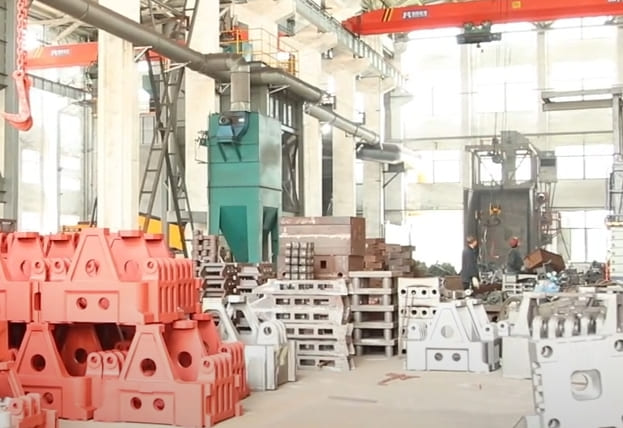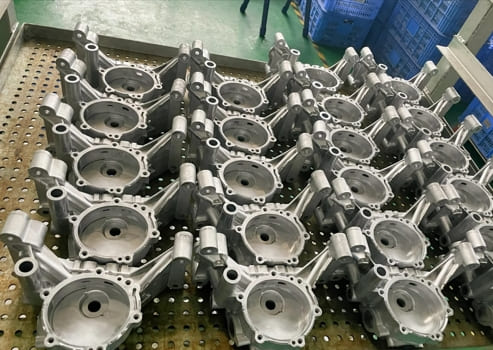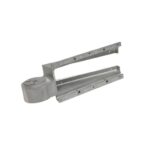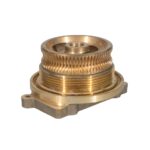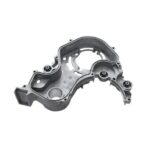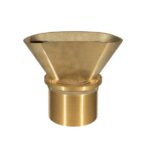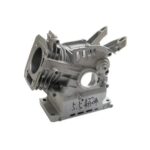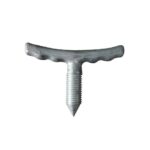After two decades watching cavities fill at 40 m/s, I still wince when an X-ray exposes a pea-sized void hiding inside an otherwise perfect housing. Trapped air is the gremlin of high-pressure die casting, and impregnation invoices are its calling card. Installing a vacuum system was the single smartest upgrade I ever made.
Below I break down why—and how—you can bank the same pay-offs without turning your die shop into a science project.
How Vacuum Assist Works in a Die-Casting Cell
Pulling a deep vacuum isn’t sorcery; it’s plumbing, sensors, and timing discipline. A one-way valve evacuates the cavity to roughly 25 mbar an eyeblink before the shot sleeve fires. As soon as molten aluminum hits the gate, a reed switch slams the vent shut, locking low pressure inside while metal packs every corner.
The extra step adds less than a second to cycle time, yet it strips oxygen and lube vapors that would otherwise grow into hidden blisters after heat-treat.
Core Benefits vs. Conventional HPDC
| Performance Metric | Conventional HPDC | Vacuum-Assist HPDC | Improvement |
|---|---|---|---|
| Internal Porosity (%) | 1.0 – 1.8 | ≤ 0.3 | 50 – 80 % ↓ |
| Weld Pass Rate | 60 – 70 % | 95 %+ | Huge jump |
| Leak-Tight Pressure (bar) | 6 – 8 | > 12 | 40 % ↑ |
| Heat-Treat Accept Yield | 80 % | 97 % | Fewer blisters |
| X-Ray Scrap Rate | 5 – 8 % | ≈ 2 % | Halved |
The day we flipped the vacuum switch, my impregnation vendor lost half his monthly revenue.
Mechanical & Metallurgical Advantages
Vacuum assist doesn’t merely hide pores—it prevents them. Denser metal grains mean crack starters disappear, so fatigue life stretches and elongation climbs.
That strength bump lets my customers shave flank ribs or choose lighter alloys without sacrificing crash targets. Bonus: coatings and anodize layers finally stop bubbling like bad pizza dough.
When Vacuum Assist Pays Back Fastest
- Thin-wall e-motor housings that need flawless TIG seams.
- Battery enclosures facing 100 % helium leak tests.
- High-polish consumer casings where even a pinhole mars Class-A shine.
On programs like these, the extra tooling cost redeemed itself before the second production month closed.
Design & Process Adjustments You Still Need
A vacuum setup won’t cure sloppy gating or zero draft, so I still preach the fundamentals: pull air toward the vents, keep 1 ° draft for painless ejection, and stick with low-magnesium alloys that resist soldering.
My rule of thumb—if a surface wouldn’t fill with air in the cavity, it won’t suddenly fill with vacuum either.
Cost & Maintenance Considerations
Vacuum hardware bumps mold price by roughly 6 – 10 %, mainly for sealed vents, O-rings, and stainless plumbing. Energy draw is coffee-money small, but plan on swapping O-rings every 100 000 shots and cleaning vent filters each shift. Most shops earn the investment back after the first 30 000 pieces via lower scrap and cured leak claims.
Case Snapshot—Slashing X-Ray Scrap on a Gearbox Cover
One customer’s gearbox lid failed X-ray 7 % of the time. We machined a 4 mm vent pad, plumbed a 25 mbar vacuum, and porosity fell to ASTM E505 level 2.
Annual savings: US $28 000 in impregnation, another US $14 000 in re-machining. Their quality manager still sends me thank-you memes.
Implementation Checklist
- Confirm press ports and I/O signals support vacuum timing.
- Dye-check the first shot to verify the vent seal actually seals.
- Train operators to back-flush vent filters at every shift change.
- Log cavity pressure curves; they’re the heartbeat of your process control.
Tick those four boxes and you’ll never go back to “air-rich” casting again.
Vacuum-assist turns porosity from an inescapable evil into a solvable variable, unlocking stronger, weld-ready parts and leaner scrap rates. Curious where your current pore map sits on the improvement curve?
Email yongzhucasting@gmail.com for a personalized porosity benchmark or to schedule a live video tour of my vacuum cell. I reply faster than our vent valve slams shut.
Quick FAQ
Does vacuum casting slow the cycle?
Less than one second per shot in my cells—usually regained by lower scrap handling.
Can recycled melt still benefit?
Yes, provided hydrogen levels are controlled; vacuum removes air, not dissolved gas.
Does vacuum clash with squeeze-pin technology?
They complement each other—vacuum pulls air first, squeeze pins kill any late shrink cavities.
Searching for High-Quality for Cast Aluminum Parts Supplier?
You’ve come to the right place! Yongzhu Casting is a certified die casting manufacturer with over 20 years of expertise in the industry.
We have successfully completed numerous die casting projects for Aluminum casting parts, particularly in your industry.

Zhejiang Yongzhu Casting Technology Co., Ltd.
Location: Zhejiang, China
Company type: Manufacturers, Producers, Wholesalers
Year Founded: 2004
Main Products: Aluminium die casting, Mold Making, Die Casting, Sand Casting, Gravity Casting
Leading Chinese producer Yongzhu Casting is formerly known as Hangzhou Higer Metal Products Co., Ltd., was established in 2004.
With 20 years of experience in the industry, we are a specialized manufacturer in Aluminum casting and Machining.
Our products are widely used in various applications such as Automotive, Energy, Lighting, Medical, Home Furnishings, Machinery & Equipment etc. Below are our advantages:
Design Review & DFM Support
Our professionals will evaluate your designs and provide suggestions for cost savings. Additionally, we offer Design for Manufacturing (DFM) assistance and conduct mold flow analyses to facilitate efficient production.
State-of-the-Art Manufacturing Equipment
Our facility is equipped with advanced hot-chamber and cold-chamber die casting machinery for aluminum and zinc production.
We also utilize high-precision CNC machines in a temperature-controlled workshop, featuring 3-Axis, 4-Axis and 5-Axis setups to manage any project you have.
Rigorous Quality Control Measures
Our dedicated quality control team ensures that all parts meet the highest standards of quality and consistency. We employ high-accuracy measurement instruments, including CMM, spectrometers, and X-ray detectors.
Comprehensive Surface Treatment Options
We provide a variety of surface finishing techniques for your precision die casting components. Our in-house services include cleaning, polishing, anodizing, shot blasting, and painting.
Flexible Project Acceptance
While larger manufacturers often shy away from low-volume projects, and smaller ones may struggle with quality, Yongzhu Casting stands apart. We prioritize customer satisfaction and willingly accept high-mix, low-volume projects like yours.


